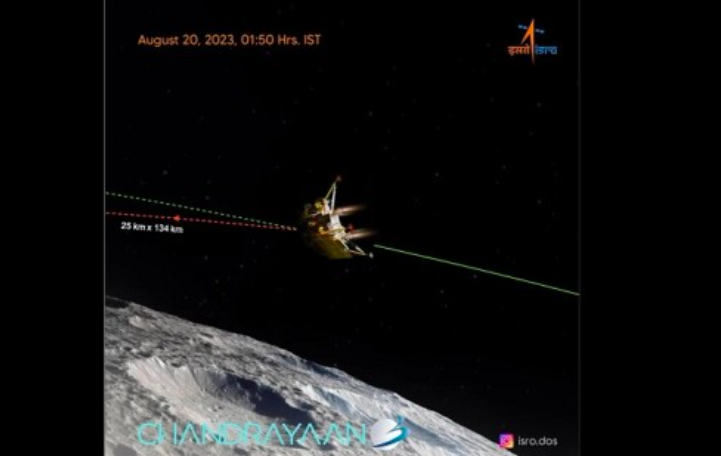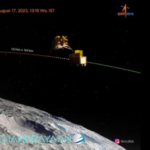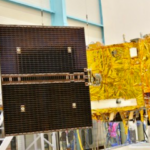India’s latest moon lander has established communication links with the Chandrayaan-2 mission’s orbiter that is circling the moon since 2019, said Indian Space Research Organisation (ISRO).
“Welcome, buddy!” said the Chandrayaan-2 Orbiter to the lander that was carried by the Chandrayaan-3 spacecraft this year.
“Two-way communication between the two is established,” ISRO tweeted on Monday.
The space agency also said the Mission Operations Complex had now more routes to communicate with the lander.
In other words, the Chandrayaan-2 Orbiter will be the backup communication channel for ISRO with the lander.
The Chandrayaan-3 spacecraft comprises a propulsion module (weighing 2,148 kg), a lander (1,723.89 kg) and a rover (26 kg).
Recently, the lander module got detached from the propulsion module and the latter is also circling the moon at an altitude of 25 km x 134 km.
The systems of the propulsion module is being checked and would await the sunrise at the designated landing site. The powered descent is expected to commence on August 23, 2023, around 1745 Hrs. IST,” ISRO had said.
The lander carries the rover inside it and after landing on the moon, the rover is expected to roll down and do the scientific experiments assigned to it.
The primary communication channel will be the Mission Operations Complex at ISRO Telemetry, Tracking and Command Network (ISTRAC), Bengaluru to Chandrayaan-3 Propulsion Module which in turn would talk to the lander and the rover.
According to ISRO, the lander is expected to set its foot near the South Pole of the moon on August 23, 2023 at around 6.04 p.m.
The lander will descend to the moon from a height of about 100 km from the moon’s surface.
The main purpose of India’s third moon mission costing about Rs 600 crore is to land the lander softly on the moon.
The Chandrayaan-2 mission failed as the lander called ‘Vikram’ crashed on to the moon.
The soft landing is a tricky issue as it involves a series of complex manoeuvres consisting of rough and fine braking.
Imaging of the landing site region prior to landing will be done for finding safe and hazard-free zones.
Subsequent to the soft landing, the six-wheeled rover will roll out and carry out experiments on the lunar surface for a period of one lunar day which is equal to 14 earth days.
Meanwhile, the propulsion module will go around the moon for some more period with its payload Spectro-polarimetry of Habitable Planetary Earth (SHAPE) doing its job.
The Chandrayaan-3 was put into orbit on July 14 in a copybook style by India’s heavy lift rocket LVM3.
The spacecraft completed orbiting around the earth and headed towards the moon on August 1.
On that day a successful perigee-firing performed at ISTRAC, the ISRO had injected the spacecraft into the translunar orbit.


